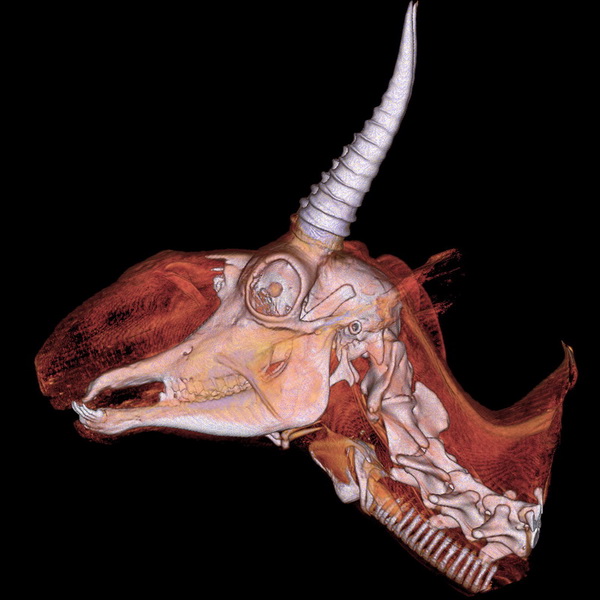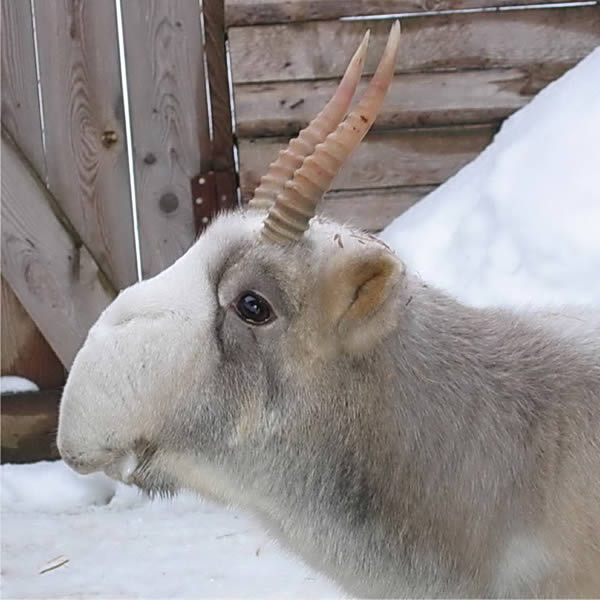|
|
|
ANTELOPES:
saiga (Saiga tatarica), impala (Aepyceros melampus), mongolian gazelle (Procapra gutturosa)

Study Site: Volokolamsk breeding centre of Moscow Zoo (Moscow prov., Russia), natural population in Kazakhstan, Okambara Elephant Ranch (Namibia), Natural reserve "Daursky" (Zabaikalsky krai, Russia).
Dates: Since 2001 onward.
Participants: Volodin Ilya, Volodina Elena, Efremova Kseniya, Sibiryakova Olga.
Collaborators: Frey Roland (Leibniz Institute for Zoo and Wildlife Research, Berlin, Germany), Zuther Steffen, Salemgareev Albert (ACBK, Kazakhstan), Kirilyuk Vadim (Natural reserve "Daursky", Russia).
Popular papers: <Priroda>. |
|
In many ungulate species, during a breeding season, the vocal displays are included in complex male vocal behaviour, directed to attraction of mates and threatening the potential rivals. In mammals, more experienced, adult animals have a larger body size, so the acoustical cues to body size (low fundamental and formant frequencies) can represent direct traits of male harem status. A strong sexual selection pressure on male self-advertising vocal rutting displays may a peculiar structure and sounding of their respective rutting calls even in phylogenetically distant taxa. Based on combination of the acoustical, behavioural and anatomical approaches, elucidation of function of vocal tract elongation: either trunk or male laryngeal lowering for their rutting vocalization, reminiscent of evolutionary descent of the human larynx, is possible.
Impala and Mongolian gazelle represent two other species of harem ungulates along to red deer, European fallow deer and goitred gazelle, in which males have a low-positioned and enlarged larynx compared to females.
Saiga is a single species of large antelopes, whose strongly enlarged nasal vestibulum forms a trunk, evolved evolutionary as an adaptation for filtration of dust at fast locomotion. All call types of these antelopes are produced with help of this trunk. The most interesting is the pulsed call, occurring in all age-sex groups of saigas. Besides size-related differences in call structures, pulsed roars of males during the rut are additionally modified due to a specific vocal posture. This posture, with strongly extended and tensed trunk, results in additional decrease of formant frequencies (vocal resonances) in sounds. Since, in mammals, the low formant frequencies are related to large body sizes, the lowering of formant frequencies in roars of harem-holding saiga males results in vocal size exaggeration, and the caller seems larger by ear than really. It is important for saigas, because most matings occur mainly at nights, when real sizes of callers are not visible.
Project aim:
Detailed description of the acoustic structure of male vocal displays in harem antelope species, elongating their vocal tract during the emission of the rutting calls. Confronting the acoustic structure of rutting calls and the anatomical traits of the vocal apparatus. Description of the morphological structures, responsible for the characteristic vocal traits.
  Sounds in the Gallery. Sounds in the Gallery.
 _Expedition... _Expedition...
|
 |
 |
| |
|
Papers:
- Volodina E.V., Volodin I.A., Frey R. Male impala (Aepyceros melampus) vocal activity throughout the rutting period in Namibia: daily and hourly patterns. African Journal of Ecology,2022, v. 60, p. 95-99. doi: 10.1111/aje.12923 270.pdf
Frey R., Volodin I.A., Volodina E.V., Efremova K.O., Menges V., Portas R., Melzheimer J., Guido F., Gerlach C., von Dornberg K.Savannah roars: The vocal anatomy and the impressive rutting calls of male impala (Aepyceros melampus) - highlighting the acoustic correlates of a mobile larynx // Journal of Anatomy, 2020, v. 236, N 3, p. 398-424. doi: 10.1111/joa.13114 254.pdf Volodina E.V., Volodin I.A., Chelysheva E.V., Frey R. Hiss and snort call types of wild-living giraffes Giraffa camelopardalis: acoustic structure and context // BMC Res Notes, 2018, v. 11:12, doi:10.1186/s13104-017-3103-x. 241.pdf -
Volodin I.A., Volodina E.V., Frey R., Kirilyuk V.E., Naidenko S.V. Unusually high-pitched neonate distress calls of the open-habitat Mongolian gazelle (Procapra gutturosa) and their anatomical and hormonal predictors // Science of Nature, 2017, 104, 50. 236.pdf
- Volodin I.A., Sibiryakova O.V., Frey R., Efremova K.O., Soldatova N.V., Zuther S., Kisebaev T.B., Salemgareev A.R., Volodina E.V. Individuality of distress and discomfort calls in neonates with bass voices: wild- living goitred gazelles (Gazella subgutturosa) and saiga antelopes (Saiga tatarica) // Ethology, 2017, v. 123, N 5, p. 386–396. 234.pdf
-
Sibiryakova O.V., Volodin I.A., Frey R., Zuther S., Kisebaev T.B., Salemgareev A.R., Volodina E.V. Remarkable vocal identity in wild-living mother and neonate saiga antelopes: a specialization for breeding in huge aggregations? // Science of Nature, 2017, v. 104, 11. 230.pdf
- Volodin I.A., Sibiryakova O.V., Kokshunova L.E., Frey R., Volodina E.V. Nasal and oral calls in mother and young trunk-nosed saiga antelopes, Saiga tatarica // Bioacoustics, 2014, v. 23, N 2, p. 79-98. 199.pdf
- Volodin I.A., Volodina E.V., Efremova K.O. Antelope, calling through the nose: structure of sounds and effect of sexual selection on the vocal behavior of the saiga (Saiga tatarica) // Zoologicheskii Zhurnal, 2009, v. 88, N 1, p. 113-124. (available in Russian)164.pdf
- Frey R., Volodin I., Volodina E. A nose that roars: anatomical specializations and behavioural features of rutting male saiga // Journal of Anatomy, 2007, v. 211, N 6, p. 717-736. 151.pdf
|
|



